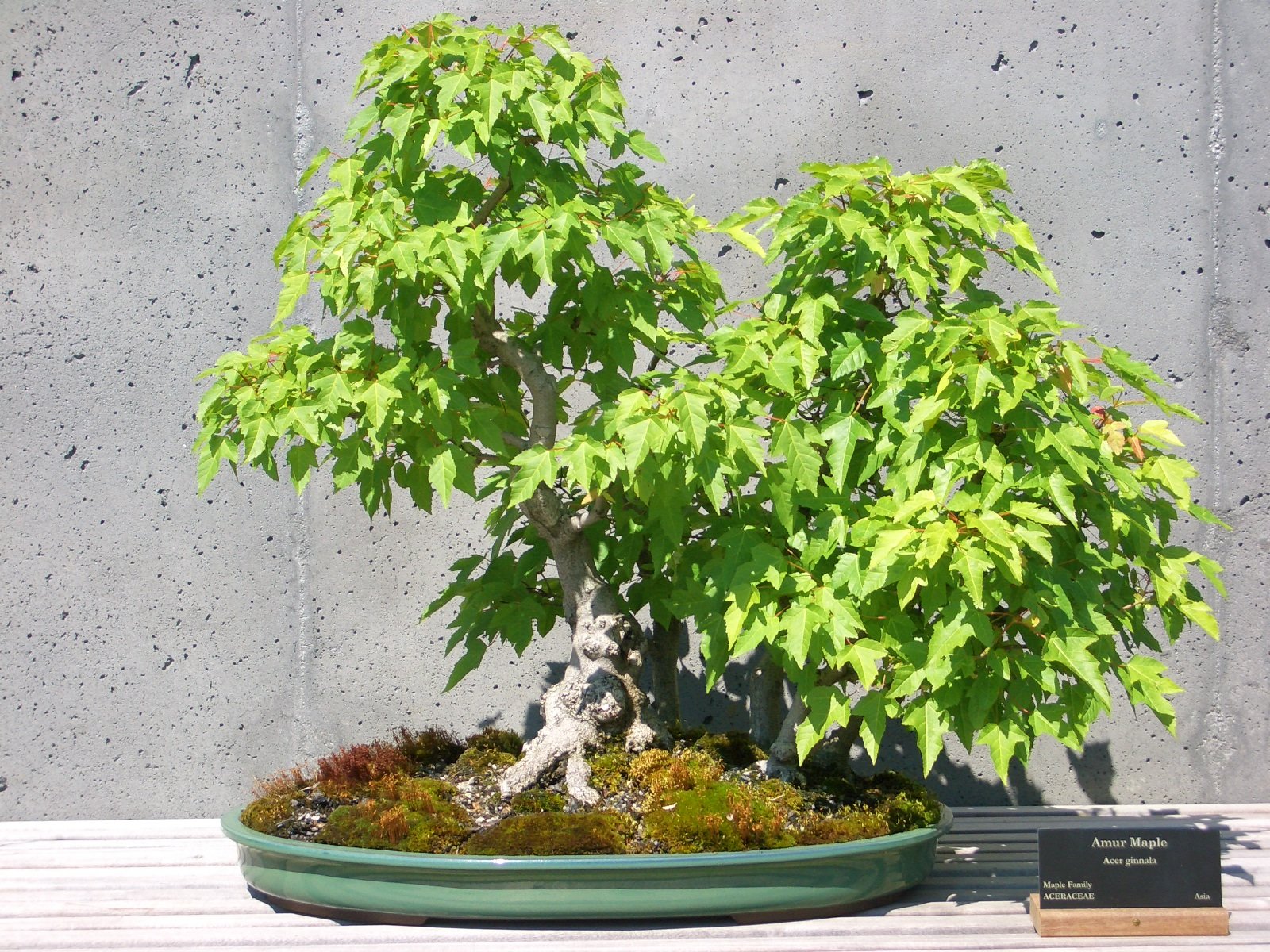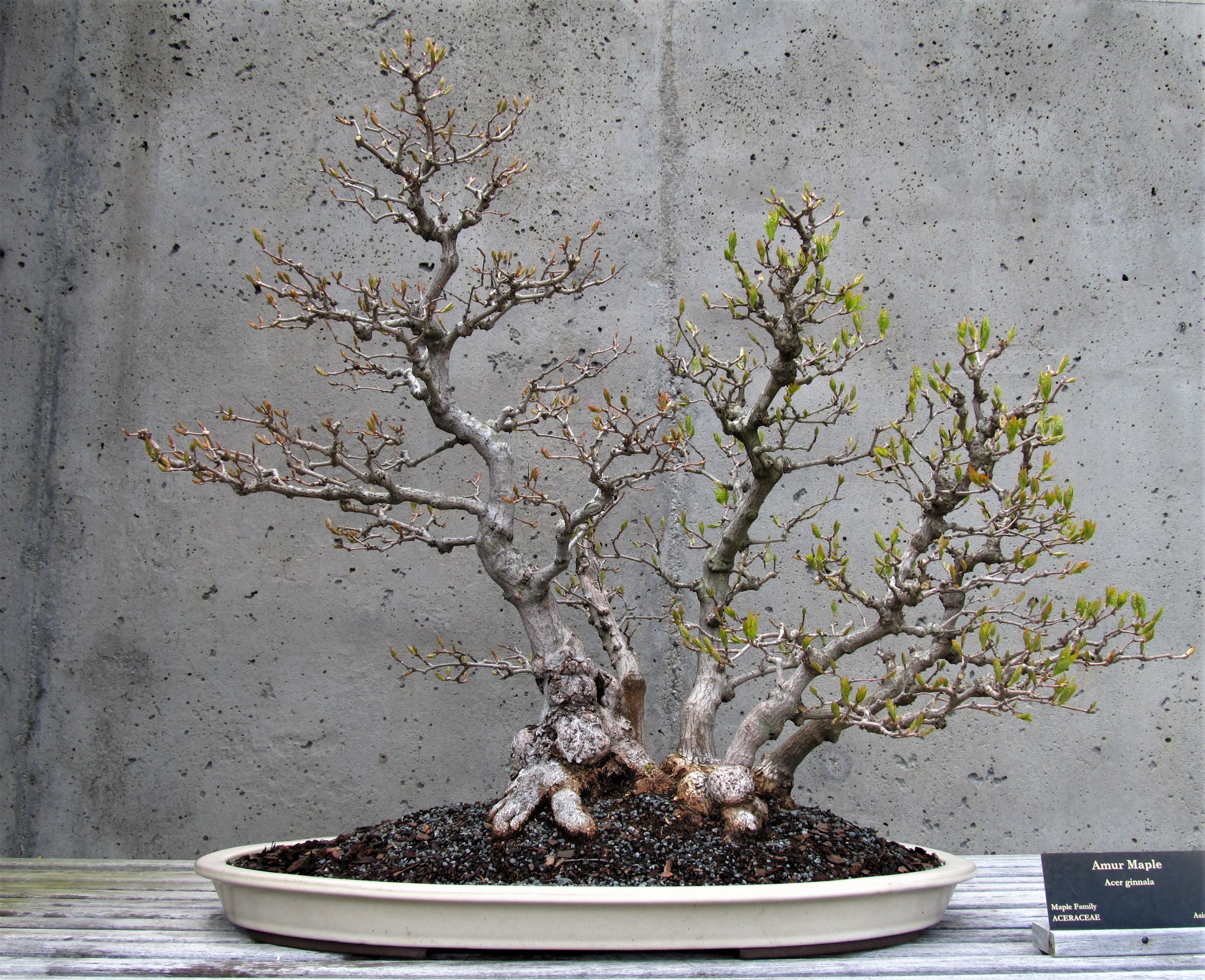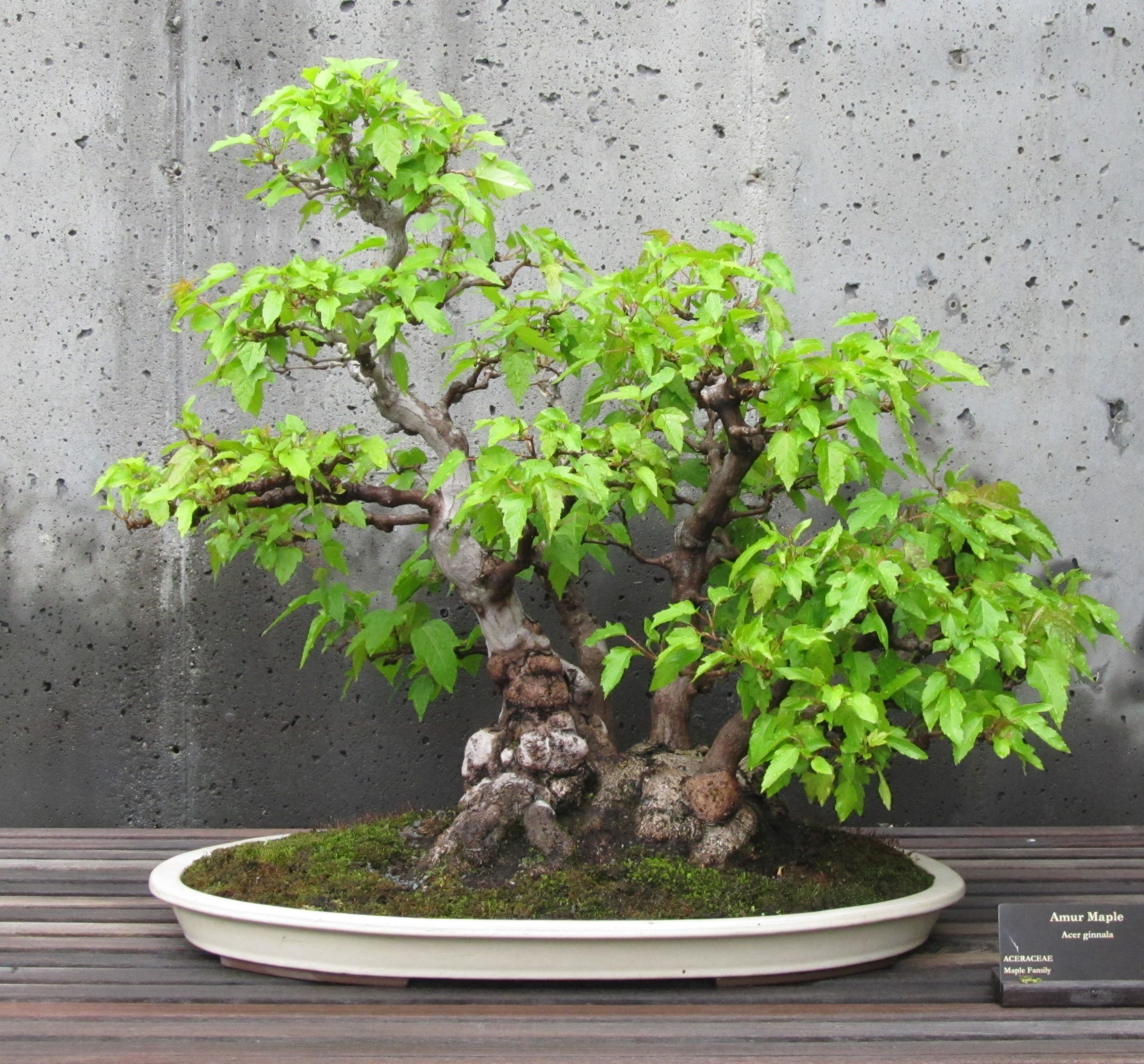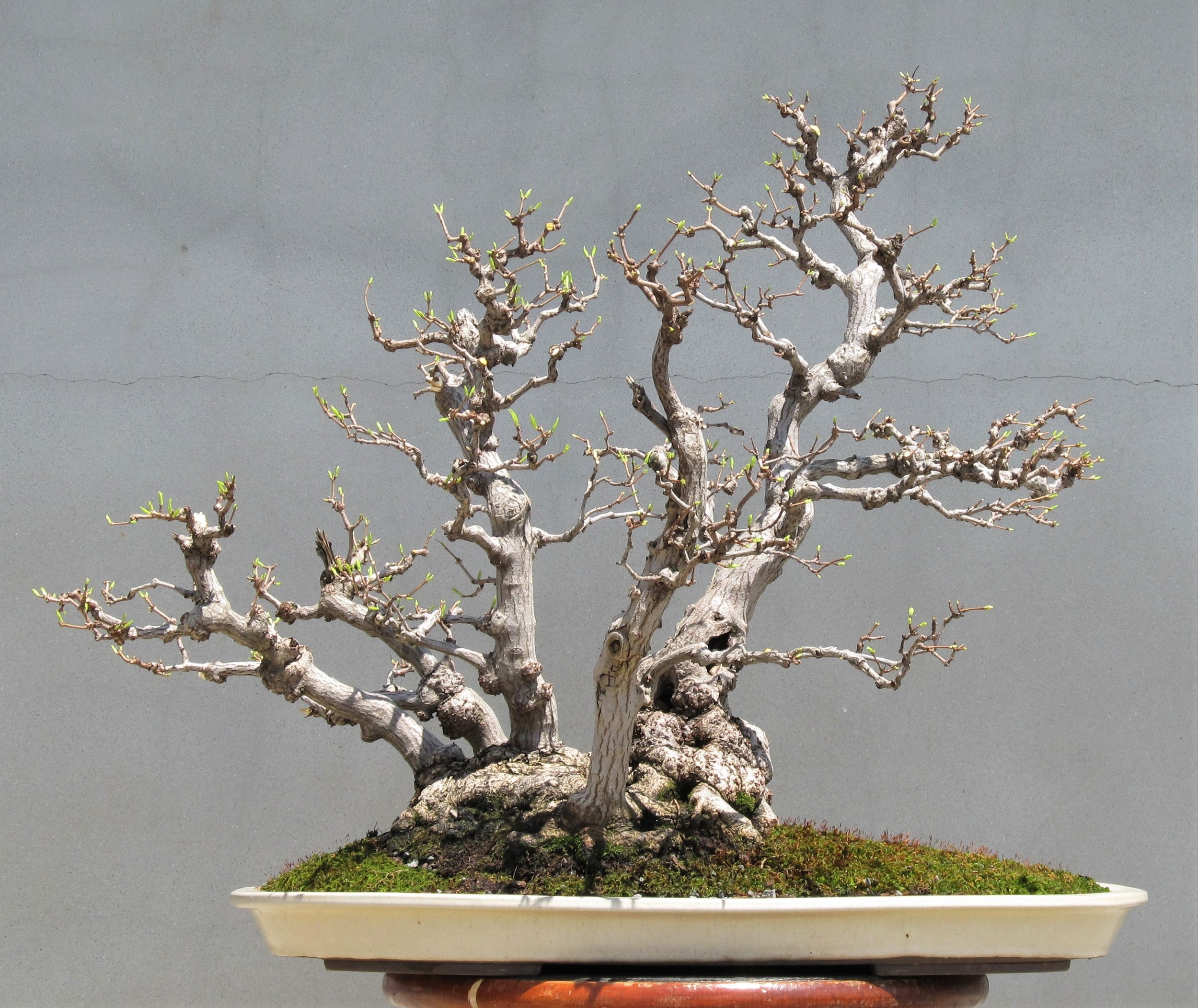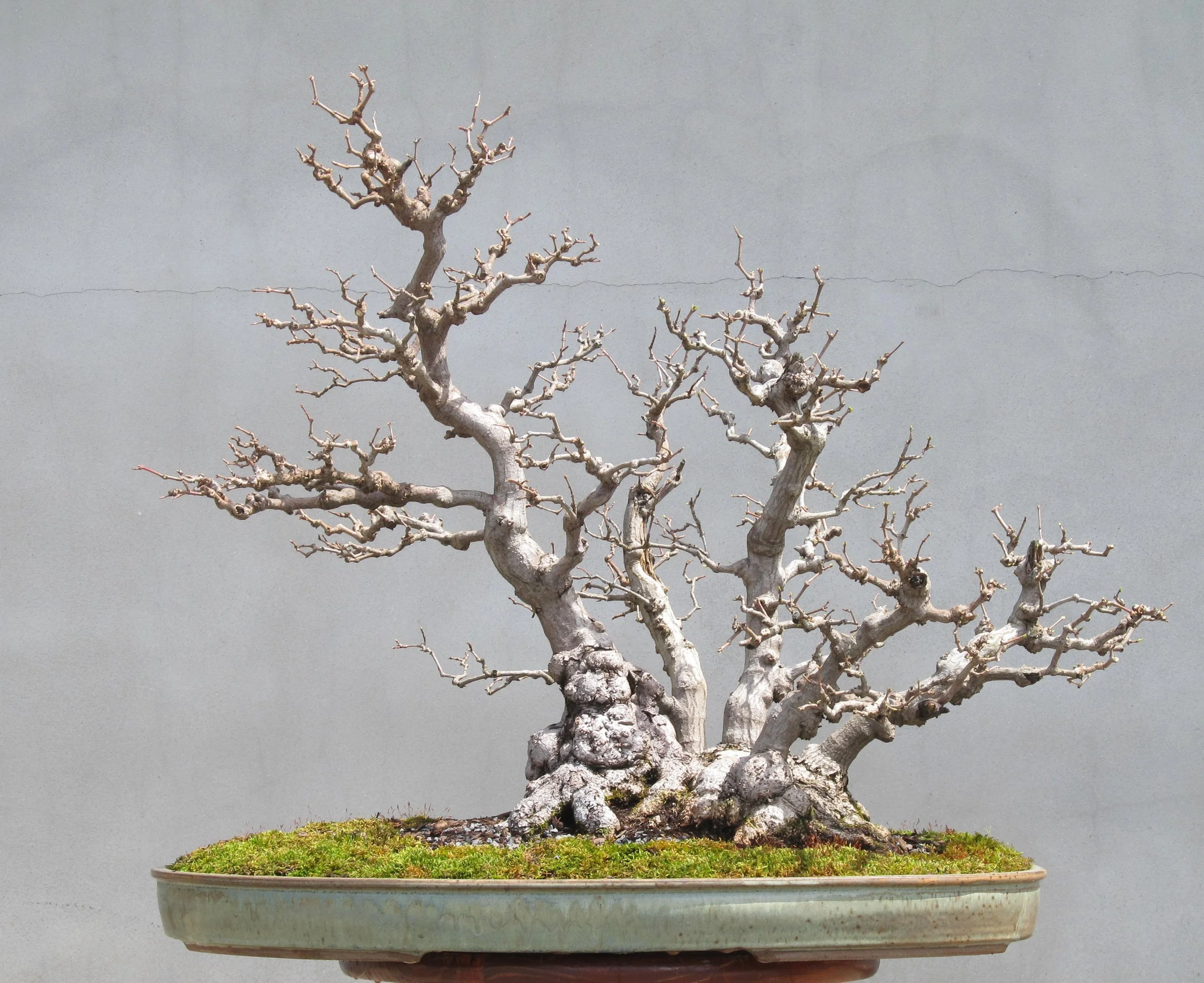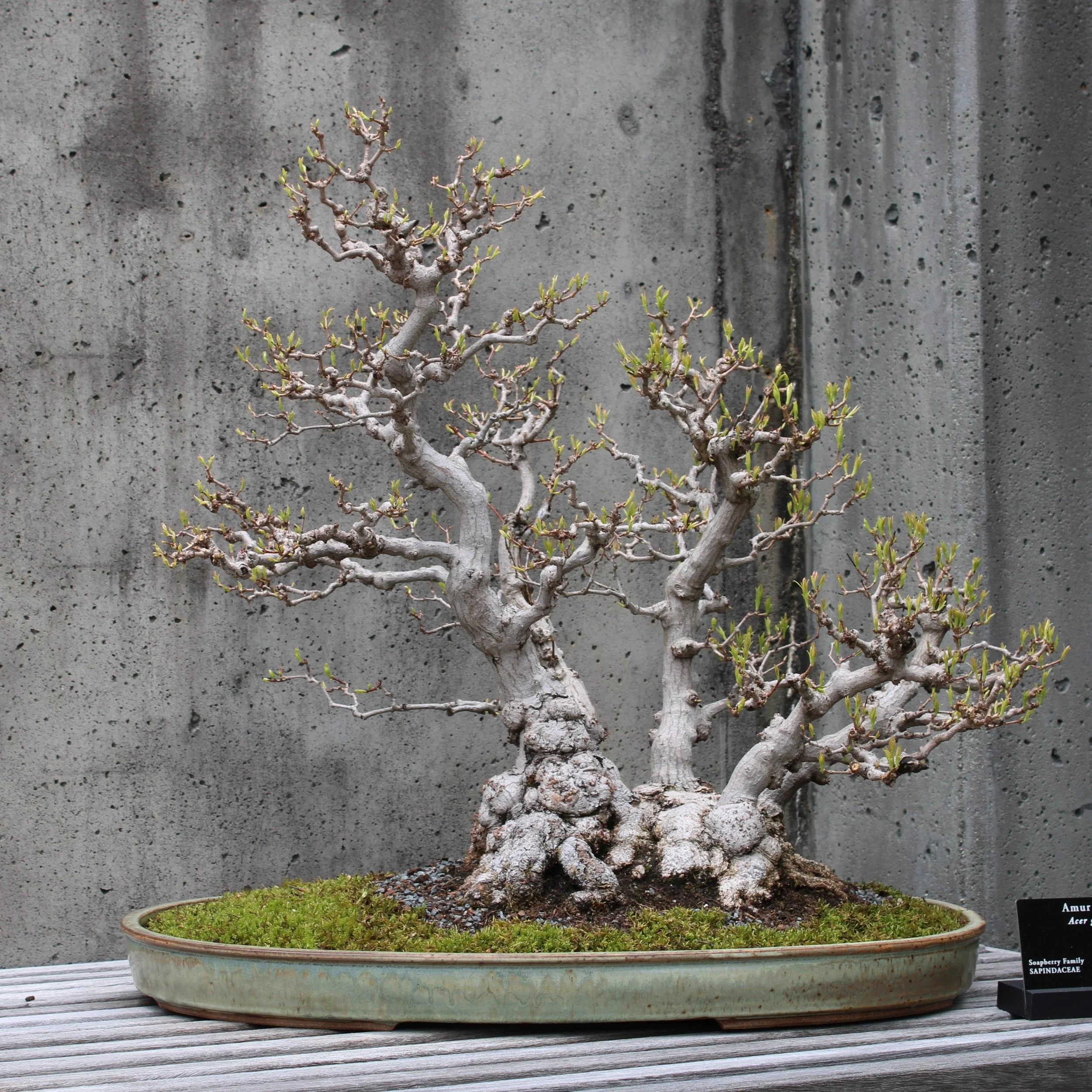Amur Maple Group Planting
Rightly or wrongly, I tend to think of Amur maple (Acer ginnala) as a less-cultured version of trident maple (Acer buergerianum). Both are Asian species, and both work well for bonsai. In nature, both are understory trees growing to a height of thirty to forty feet over time. The bark of Amur maple is not unattractive but it is unexciting, and not nearly as appealing as the exfoliating bark of a trident. The foliage of these two maples is similar enough, but the trident wins on refinement. It has smaller leaves featuring smooth margins, while the leaves of Amur maple are generally larger, more coarse with serrated margins. One great difference between the two species is cold hardiness. Trident is cold tolerant enough to live here in the mountains of Western North Carolina, but Amur maple is cold tolerant enough to live in Siberia, which is part of its native range. In fact, Amur maple is the most cold-hardy maple species on earth.
The Staples bonsai collection included an Amur maple but it was a scruffy thing, not even recognizable as a bonsai once it was removed from a bonsai pot. It did have very appealing autumn foliage color, though, and for that reason I struck cuttings from it and began growing a little crop of Amur maples. Around the same time, The North Carolina Arboretum, for some forgotten reason, received a donation of a potted Amur maple from the US National Arboretum. This was a larger specimen, maybe six feet tall, intended for landscape use. The donation was accepted but there was no place in the landscape for the tree at that time, so it was offered to the bonsai program. In those days I was very much into taking six-foot-tall trees and cutting them down to six-inch stumps, so they might sprout back and become potential bonsai subjects. That was how the Amur maple from DC was handled, and it responded well. In a relatively short span of time the cut-back stump was taking shape as a miniature tree with a good-sized trunk.
Somewhere around 2000 the idea occurred to take the stocky Amur maple grown from a stump and group it together with some of the young ones grown from cuttings. There is no photo-documentation of any of this because my bonsai work then was being conducted at a frantic pace and I was too busy to take pictures. There was a lot of experimentation going on in those days. I tried many different techniques as a means of self-education, and some of these efforts succeeded while others failed. Starting new Amur maple bonsai from cuttings was a success. Starting a new Amur maple bonsai from a cut-back stump was a success. Putting these maples together as a group planting was also successful, although there was a hitch in the process that I didn't recognize until later.
The first known image of the Amur maple group planting dates to October of 2005, when it was one of the specimens on display at the opening of the Bonsai Exhibition Garden. It was back out on display in spring of 2006, as seen in the second image (click on either image for full view):
This group planting consists of five Amur maple trees, with the larger one on the left-hand side grown from the cut-back stump and the four smaller trees to the right grown from the cuttings. The movement of the piece is from right to left. The emptiness on the left side of the planting is intentionally exaggerated, the result of another bit of experimentation. I had learned from Mr. Yoshimura the value of suggestion. He would have identified this arrangement as being suggestive, with the empty space on the left being for the benefit of the viewer, waiting to be filled in by imagination.
Take particular note of the disposition of the five trees in the above images. They are clearly separate individuals, each one growing on its own root system.
In this image from autumn of 2009 we see the group has been planted in a new and larger container:
2009
Also visible in the above photo is the "hitch" I inadvertently built into this group planting by constructing it the way I did. Notice that the Amur maple started from the cut-back nursery tree is in full autumn coloration while those grown from cuttings are only beginning to change. Individuals of any tree species might have variations in appearance or behavior from other members of their kind. The exception to this genetic rule is when reproduction is asexual, as when trees and other plants are grown from cuttings. Plants grown from cuttings are clones of the parent plant; that is, they are exact genetic copies of the plant from which the cuttings were made.
The smaller Amur maples on the right side of the group planting are clones, but they are not clones of the large Amur maple on the left side of the planting. One of the variations between the two -- the single individual and the group of four clones -- is found in the timing of their growth cycles. In autumn, the single individual Amur maple starts leaf senescence sooner. That means its leaves turn color sooner and fall off sooner. The four clonal Amur maples are not far behind, but there are usually a couple of brief periods each year when the difference between them and the larger maple is noticeable.
In this image from early spring of 2012 we can see the same phenomenon at work earlier in the cycle:
2012
Curiously, it seems the four clones commence growth a little earlier than the single individual. When the maple leaves are very young and just emerging, they typically have a salmon-pinkish coloration that is attractive but short lived. As the leaves enlarge they turn green. This trait can also vary from individual to individual, with some maples holding onto that initial leaf coloration a little longer. In any event, for a period of time in early spring it is again apparent that this planting of five Amur maples is actually a planting of four Amur maples that are genetically identical and one that is genetically different.
So what?
I think for most people the subtle difference between the one tree and the four others with which it is planted is no matter at all. If the variation is even noticed, it might be seen as appealing for the contrast it offers. Unfortunately, by the dictates of Classical bonsai design theory, such a discrepancy is considered undesirable. I didn't know it at the time, but later learned that when making a monocultural group bonsai planting all the trees used are supposed to be clones. Perhaps the better way to phrase it would be to say that the individual trees in such a planting should all be genetically identical. Why? I suppose it has to do with a perceived superiority in uniformity as opposed to diversity. This is a reflection of the culture that devised the accepted guidelines for making Classical style monocultural bonsai group plantings, but these guidelines are not in accord with the example of nature.
It was previously mentioned that Amur maple is extremely cold-hardy. That was why, back in the early days of the bonsai garden when I used to leave a handful of bonsai out on display all winter, the Amur maple group planting was always among the few:
The overwinter bonsai garden display was eventually discontinued because it presented too great a risk to the plants and pots, although it never seemed the Amur maple was in any way affected by the cold. For a few years that particular planting was on display continuously, in all four seasons.
These images from 2017 show the Amur group enjoying a particularly favorable year of growth and development. The first photo shows the planting in late spring, apparently after pruning because the canopy is nicely open, allowing glimpses of powerful trunks and limbs. The second shows the autumn color that year, caught at a stage when the difference between the single individual tree and the four clones is not so apparent (click on either image for full view):
In April of 2019, a work session on the Amur group planting afforded an opportunity to photograph it from opposite perspectives. The first image shows the planting the way it is typically displayed, and the second shows a view of the other side (click on either image for full view):
Note once again the disposition of the five trees. They are the same trees in the exact same position as they were originally planted, but now they have all fused together at the base. Instead of five separate trees they are in effect five trunks emerging from a single unified base and root system. This was not at all planned, but is a welcome development because the unusual structure provides greater visual interest .
In all respects this group planting has been thriving and growing. In 2021 it needed a larger container, which was supplied by American bonsai potter Sara Rayner, one of the very best in the business. The new container was not only more spacious, it was a serious upgrade in quality from the containers previously used. Here, in a sequence of four images made shortly after being transplanted into the new pot, we see the group planting in the round:
The growth of this bonsai has not been simply a matter of an increase in overall size, but also in the quality of its character. Considering the trees are not much more than twenty-five or thirty years in age, they have shaped up to look like they are much older, exhibiting a rugged appearance in all aspects.
Two more seasonal images of the Amur maple group planting, in June and October of 2021 (click on either image for full view):
An image from early spring, 2023, new leaves first emerging:
The Arboretum has numerous trident maples but only one Amur maple planting in our bonsai collection. The one we have is pretty good, though.


